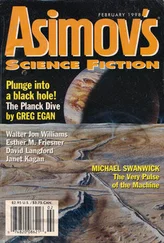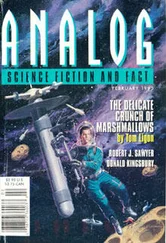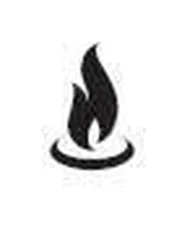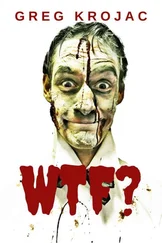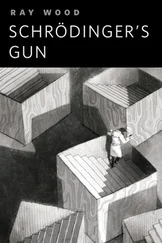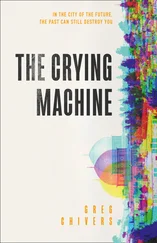Suddenly his bedside phone rang loudly. He picked up the receiver, only to hear a very anxious voice at the other end.
“Hello? Acting Administrator Nelson?”
“Speaking.”
The voice echoed Professor Whitty’s initial request.
“I think you should come to Voyager Mission control, Sir.”
Roger Nelson was definitely not in the mood to go anywhere else now.
“Just tell me.”
The voice audibly gulped.
“Voyager One – the one that’s still out there – it’s gone offline. It’s disappeared.”
“What do you mean it’s gone offline?”
The voice took a deep breath.
“Well, it takes approximately seventeen hours to receive a message from Voyager One, to confirm that the space probe is still active. It appears to have stopped sending coordinates.”
Roger Nelson’s heart sunk. as he realised the ramifications of this latest piece of news; both Voyager Ones had disappeared. This couldn’t be a coincidence.
At the White House, the President of the United States was standing in the Oval Office, discussing policy with his Vice-President and the Secretary of State, when suddenly a searing pain shot through his head like a thunderbolt, finally coming to rest behind his right eye and pounding on the rear of his eyeball. He became visibly unsteady on his feet and was forced to sink back down into the large leather executive chair that sat behind the Resolute desk. The Vice-President rushed forward to offer support if needed.
“Mr President, are you OK?”
The President held his right hand to cover his throbbing eye and motioned with his left hand.
“A sudden headache, Andrew. I’m sure it will pass.”
The Secretary of State was unconvinced.
“Perhaps we should call a doctor, Mr President.”
“No need for that. Robert. It’s improving already.”
The pain subsided and the President meant to take just a sip of water but found himself drinking the whole glassful. He stood up again, an act that concerned the two politicians; they thought that he should stay seated, at least. The President adjusted his tie and went to speak. Without warning, another shard of pain pierced his brain, worse than the first one, and he collapsed to the floor. The Secretary of State wasted no time in summoning the White House Medical Unit. Within a couple of minutes a medic was at the President’s side. He turned to the two senior members of the Administration.
“I can’t tell what’s caused this collapse here. We need to get him to the Urgent Care Center.”
Two more medics arrived with a gurney and the President was quickly placed on board and whisked away to the White House Medical Suite, leaving the Vice-President and the Secretary of State alone in the Oval Office, neither man wishing to voice what they were both thinking. The death toll from the disease outbreak had risen to four hundred and twenty-six during the morning and showed no sign of abating. The Secretary of State spoke first.
“Do you think…?”
The Vice-President shook his head.
“I’m sure it’s not.”
“But are you sure?”
“Of course I’m not sure. But I don’t want to think about it.”
“But you – we – have to think about it. We can’t ignore it.”
“Let’s cross that bridge when we come to it.”
“I think we’re going to have to cross that bridge. And sooner than we want to.”
The Vice-President knew exactly what bridge the Secretary of State was referring to. If this sudden illness of the President was the portent of something worse, that the President’s condition worsened, perhaps to the point where he could no longer perform his official duties, the 25th Amendment would be invoked and the Vice-President would be expected to serve as acting president until such time as the President was able to resume his duties. He wanted to go to the medical suite to see how the country’s leader was doing but he also knew that he needed to be available to help the rest of the administration deal with the situation.
The President did not improve. The medical staff and facilities at the White House were the best that the nation could provide, but when the red wheals began to start showing on his body, everybody realized that the President would not recover. Although most of the cases were to be found in the United States, similar cases were beginning to show up in dozens of diverse locations around the world. The disease, whatever it was, appeared to have an incubation period of seven days when it was highly infectious but those infected showed no symptoms of illness. In fact, paradoxically, many felt healthier than they had felt for a long time. Those seven days had been critical to the spread of the disease. People had criss-crossed the globe, innocent and unwitting harbingers of death, Even those who would be found immune from the disease acted as carriers for its fatal payload.
The Vice-President was sworn in as soon as it was confirmed that the President was dying. There was no point in waiting until he had breathed his last breath; he would never lead the nation again. The first thing the new President did was to declare a State of Emergency, which closed the borders and blocked both domestic and international air travel. In conjunction with the World Health Organisation, identical measures were taken by those nations that had suffered deaths through similar circumstances.
Of course these emergency measures were not without consequences. Suddenly thousands of US citizens found themselves trapped in foreign lands. US Embassy switchboards and internet servers collapsed under the strain of panicking Americans trying to get help, and that help was limited. Urgent messages could be sent to families and friends back in the United States, funds to help the stranded citizens could be transferred and even subsistence loans given if necessary. But, due to legal restrictions, the U.S. Department of State couldn’t provide private U.S. citizens with food, water, medications, supplies, or medical treatment.
The President of the United States of America was the six hundred and seventy-sixth victim of the disease to die, and the numbers were still rising.
3 May – Infected 5,218,658 Dead 817
As the clock struck midnight, the number of dead rose to eight hundred and seventeen, the majority of the fatalities being in the Seattle and Washington DC areas, although there was now a steady stream of reports from all over the country of fatalities and people presenting at hospitals and clinics with the same symptoms. Nobody had any idea of how many people had been infected with the disease, although the authorities believed that the number could stretch into millions. This was a number hidden from the public; it would only serve to exacerbate the problem, magnifying the fear in an already panicking population.
At the crack of dawn, Seattle and DC began to witness looting and violence, as hordes of people broke into pharmacies and supermarkets, searching for any medication that could possibly provide protection against or maybe even cure the disease. Shop shelves were stripped of their wares by desperate people determined to stockpile food and water in an effort to survive while sitting the emergency out. When pharmacies could no longer provide medications, the looters moved on to stealing them from clinics, hospitals, and veterinary practices.
Roads in and out of the cities were congested as the tarmac arteries filled up with cars trying to leave their homes. An irrational belief spread through communities that they could outrun the disease, but all their actions did was to make the situation worse, as the fleeing families carried the virus with them. Ambulances and emergency vehicles were unable to get to and from hospitals and many people died from causes totally unrelated to the pandemic, simply because they didn’t receive medical attention in time.
Читать дальше

